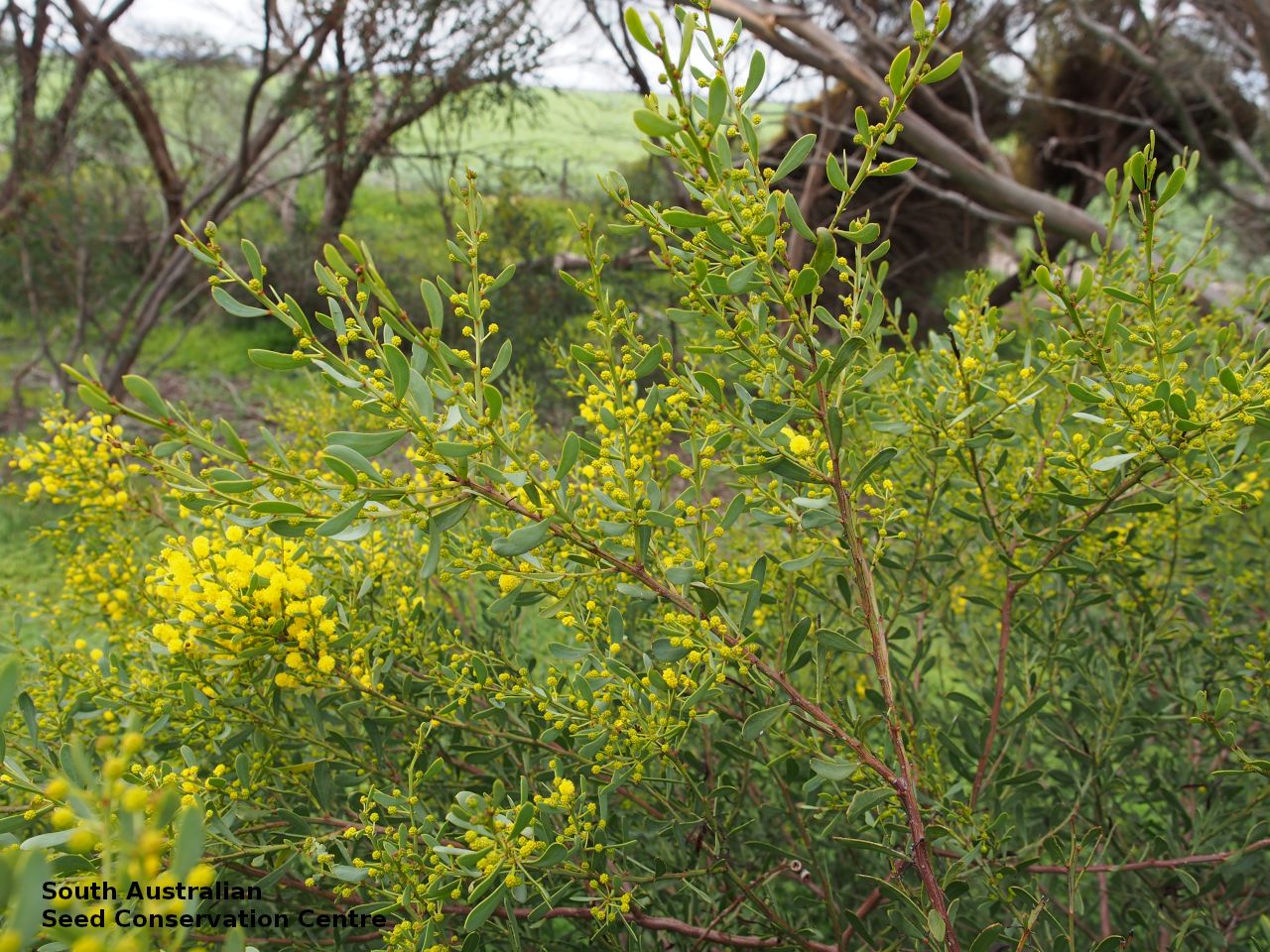
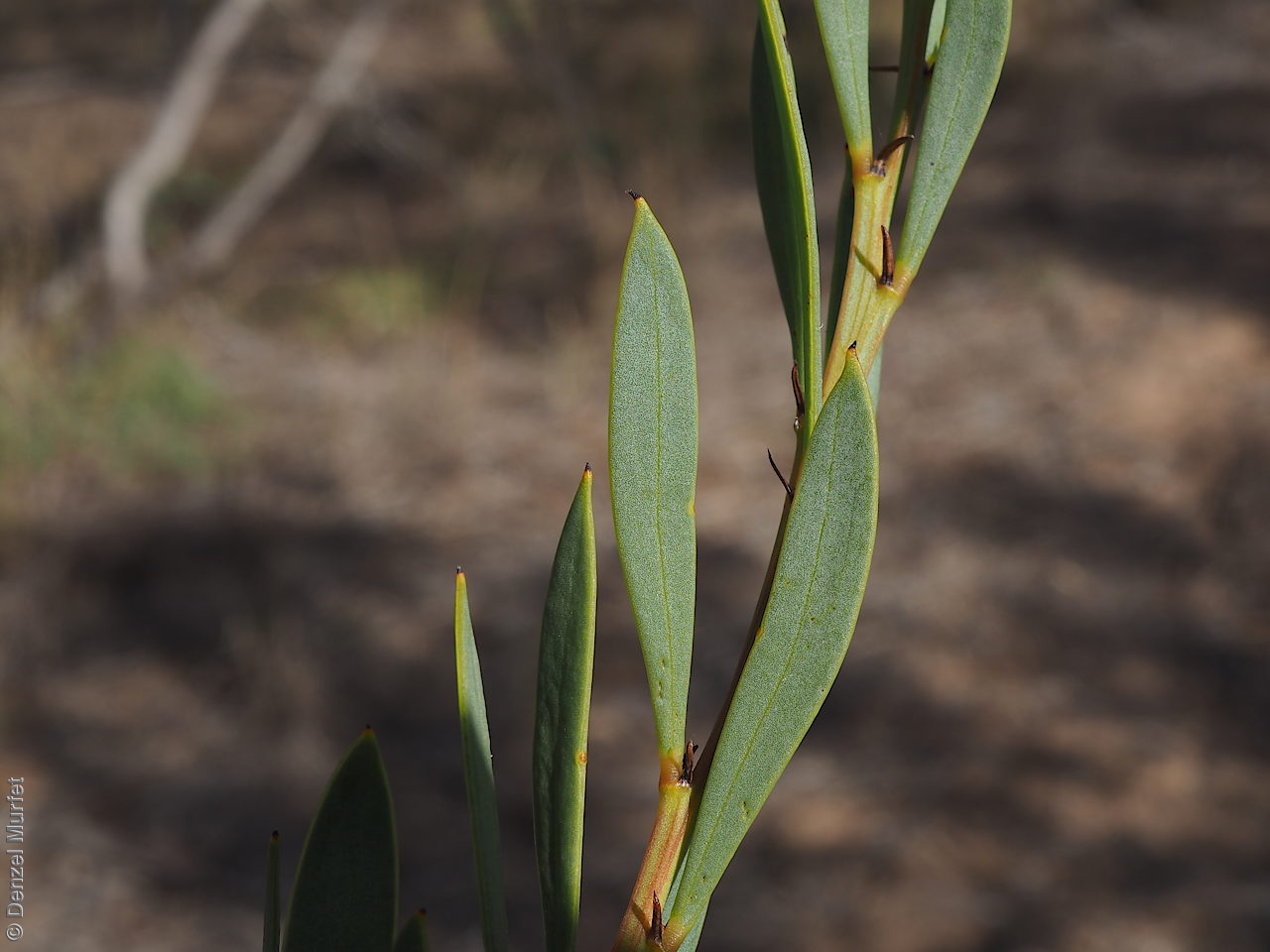
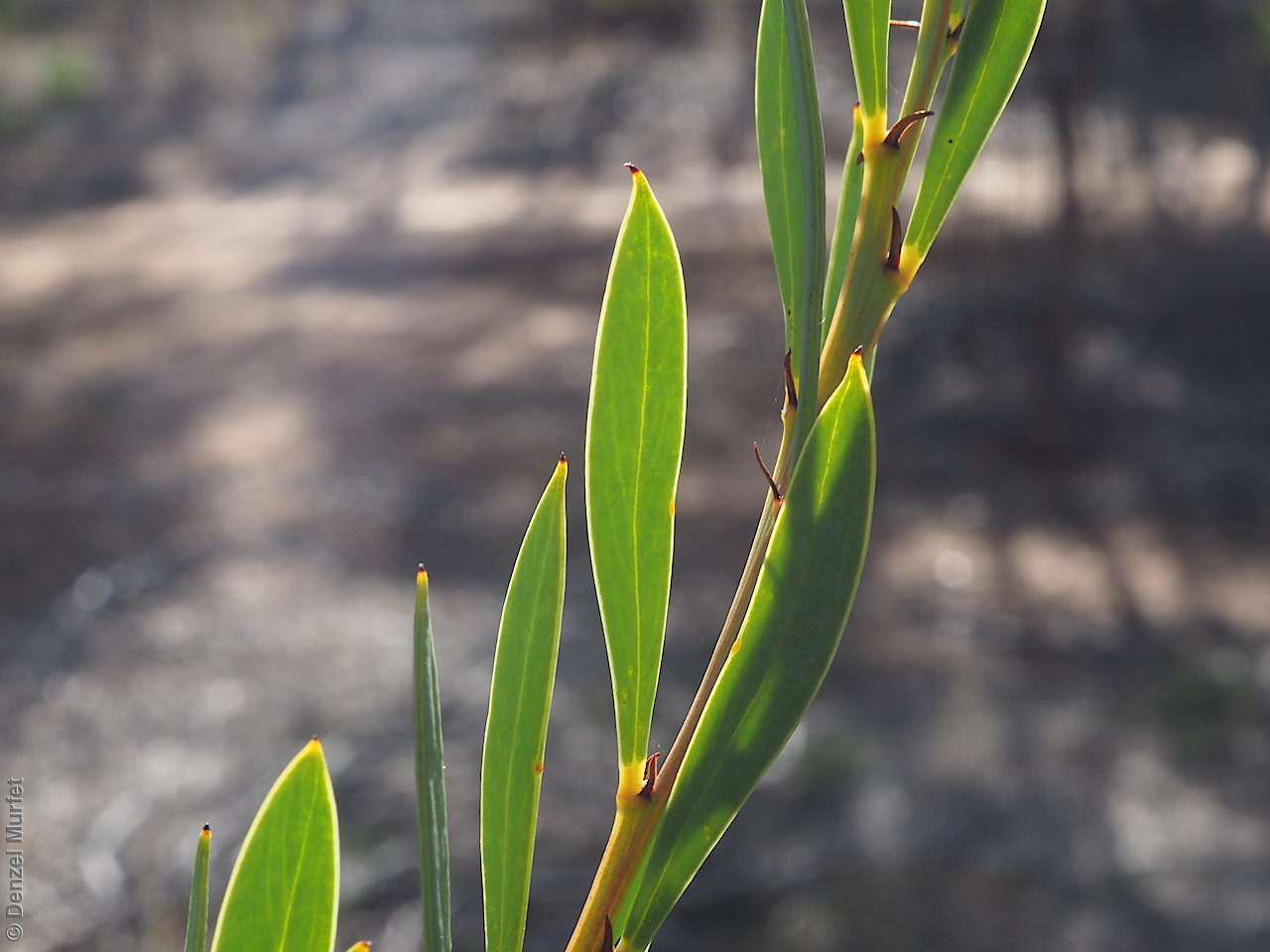

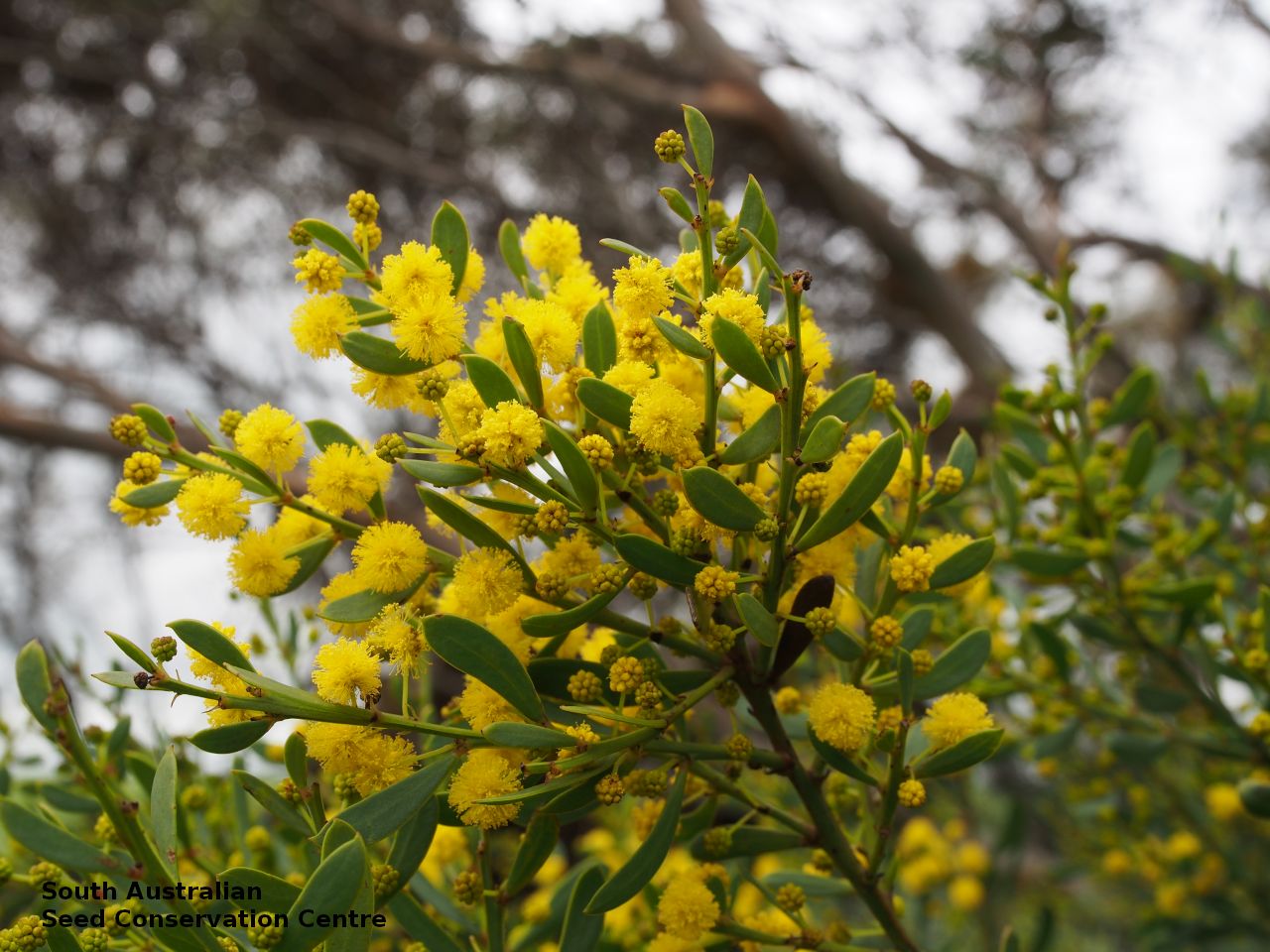

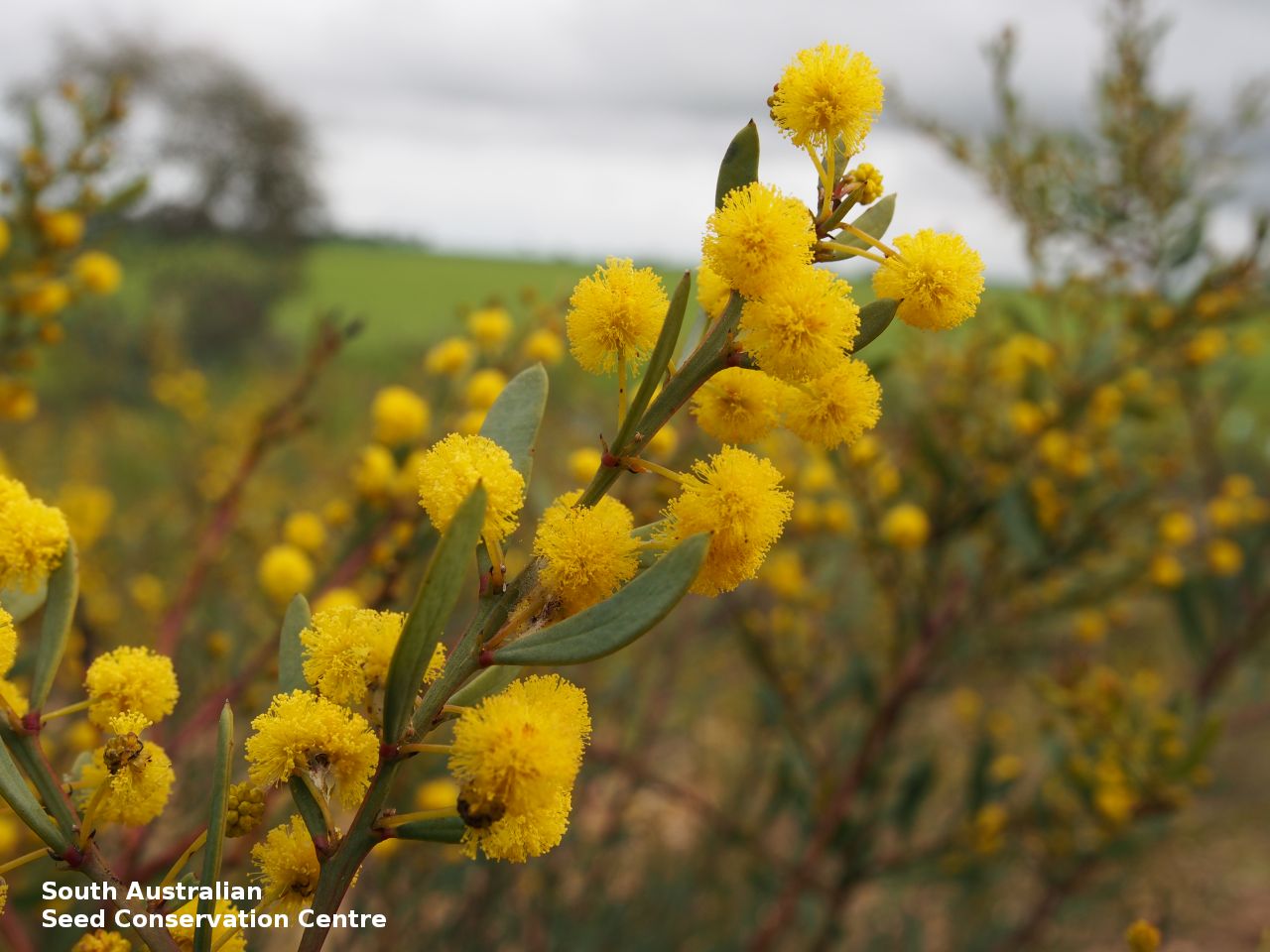
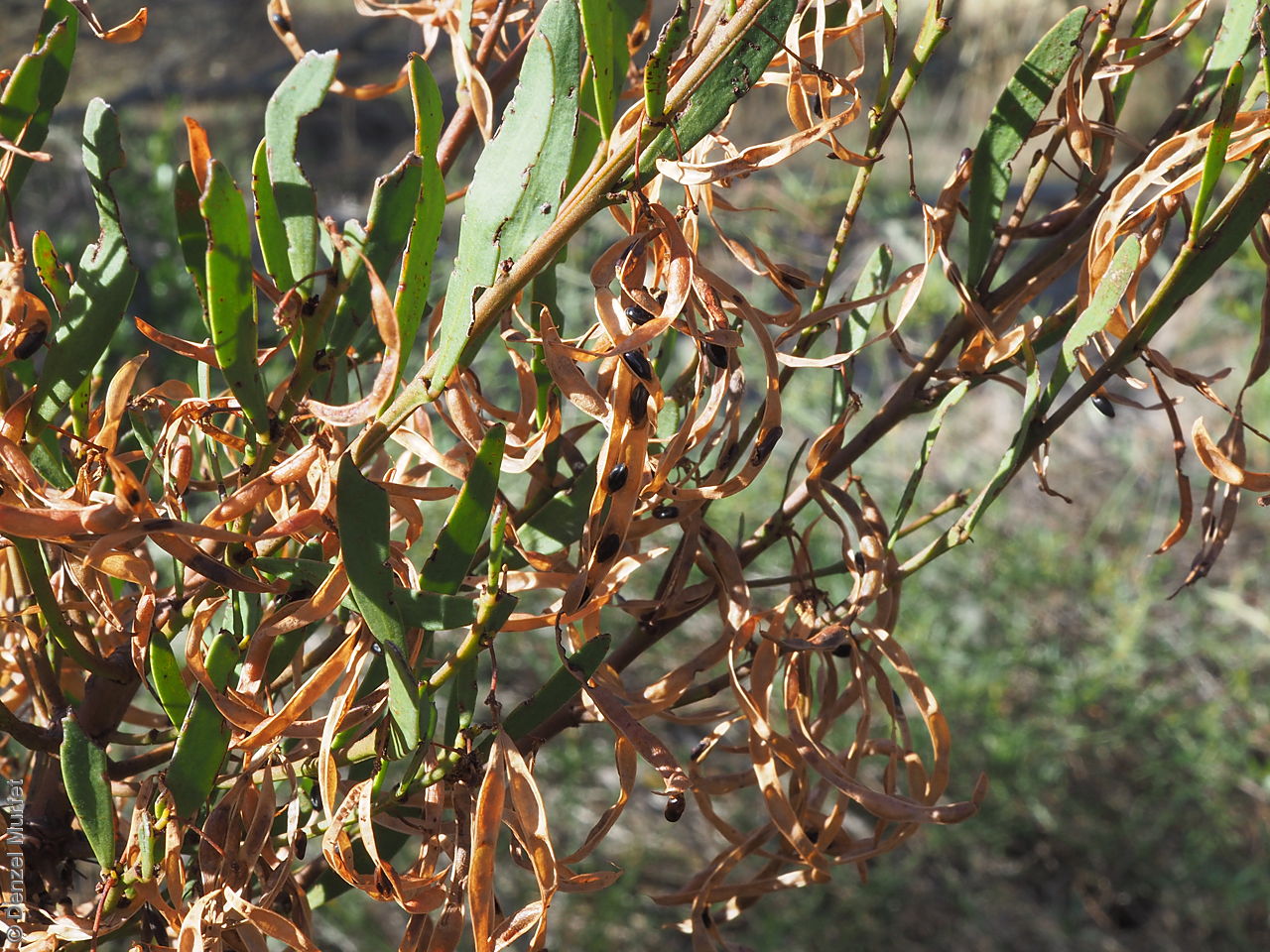
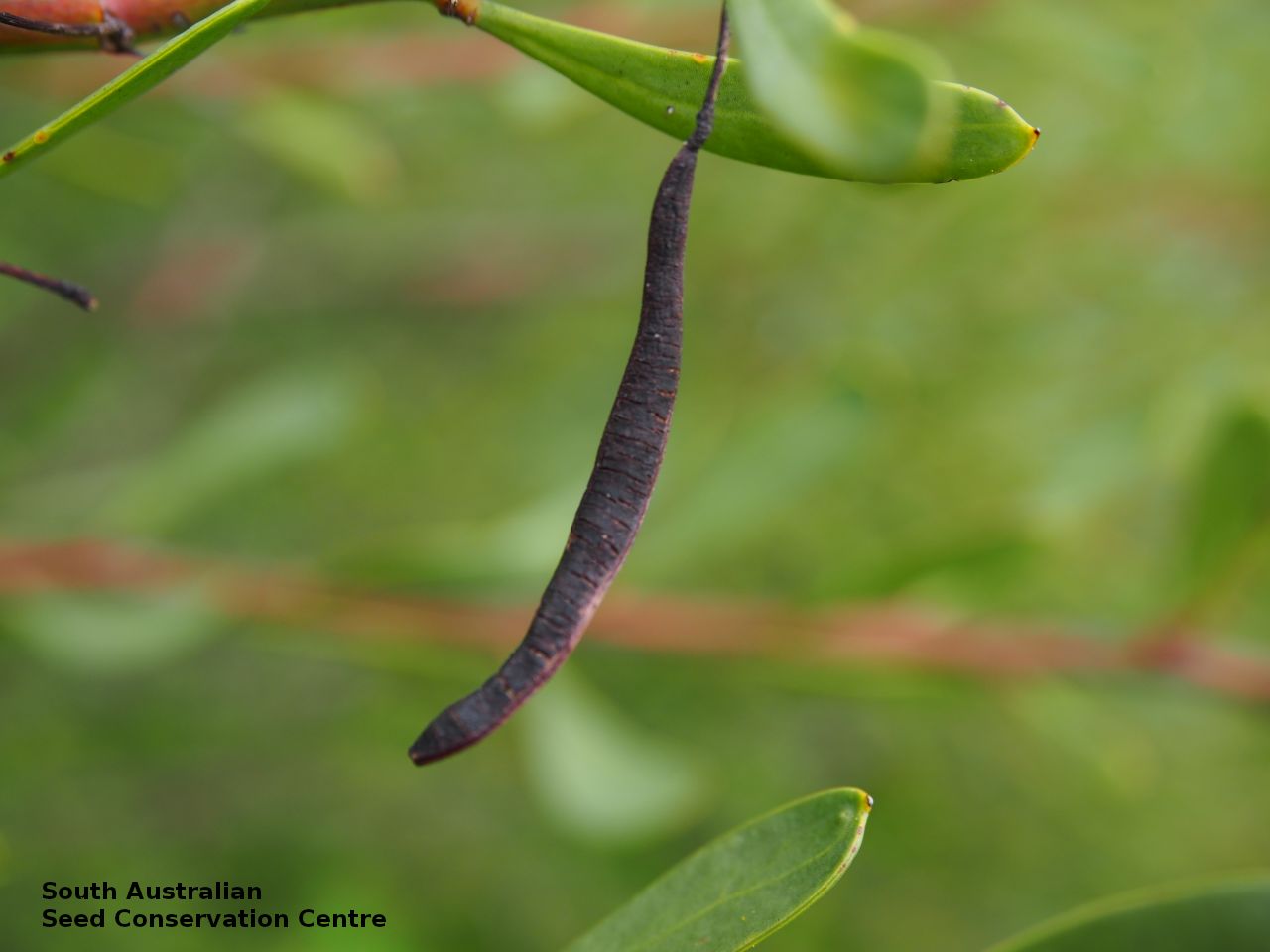
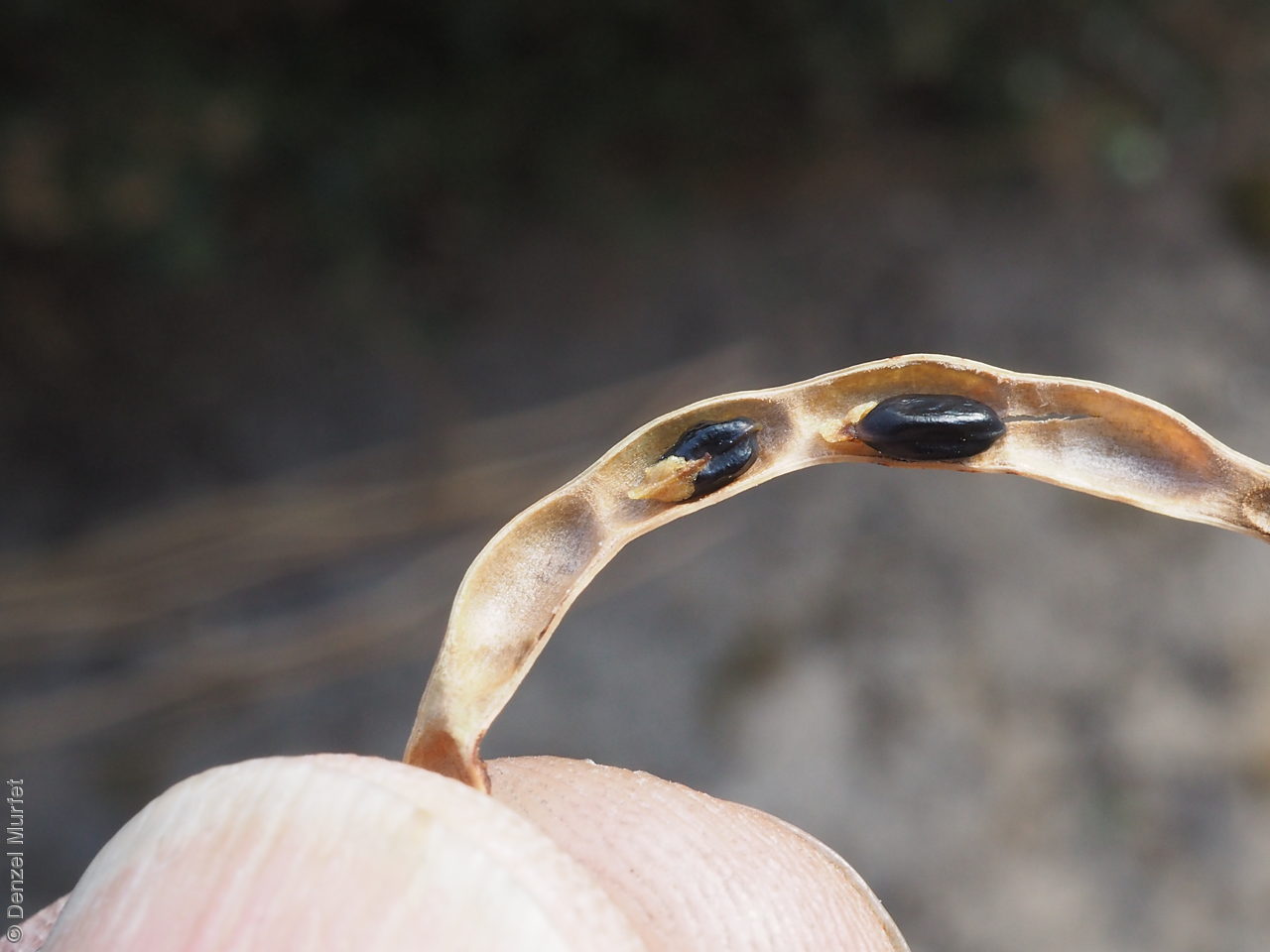
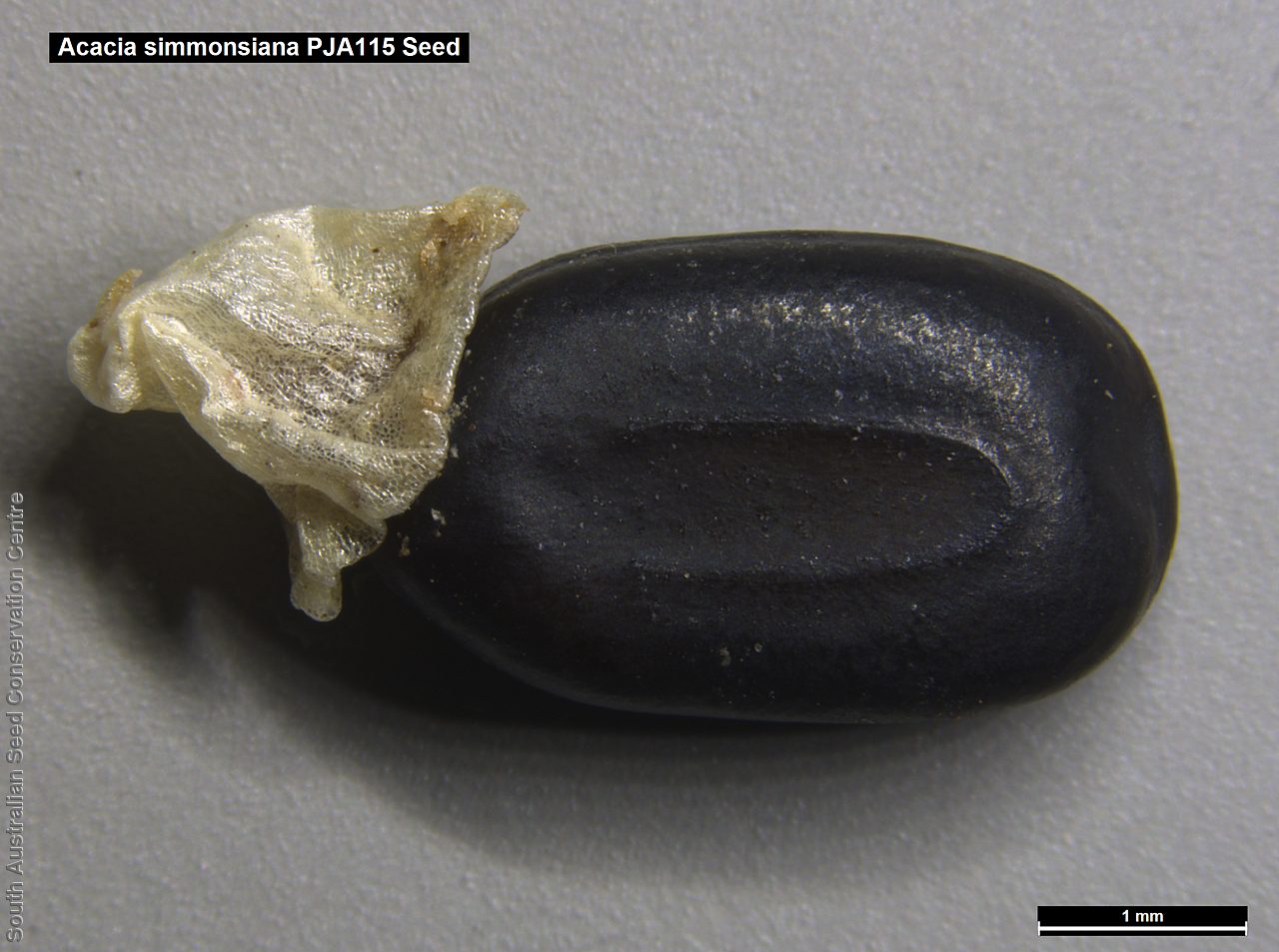
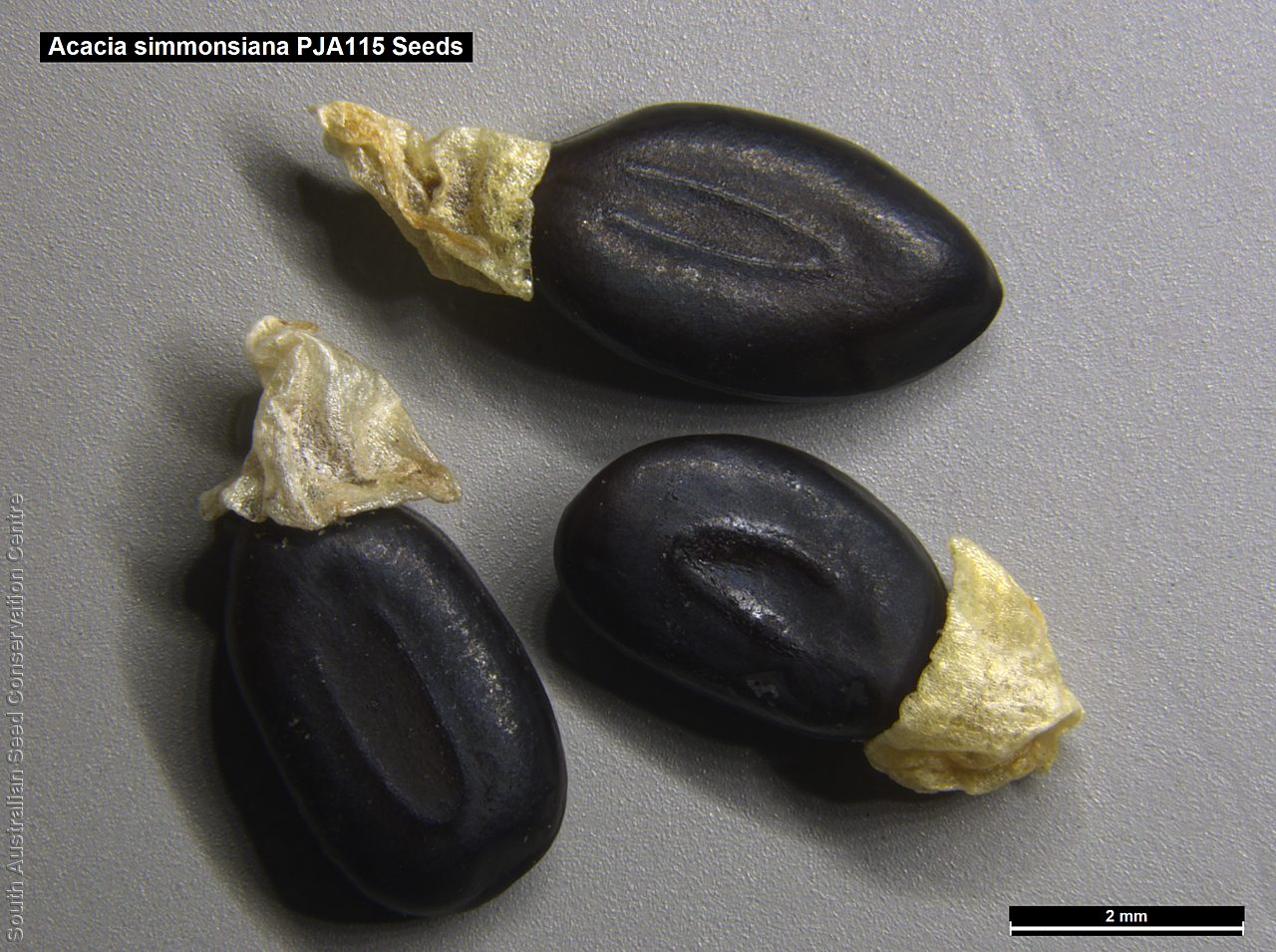

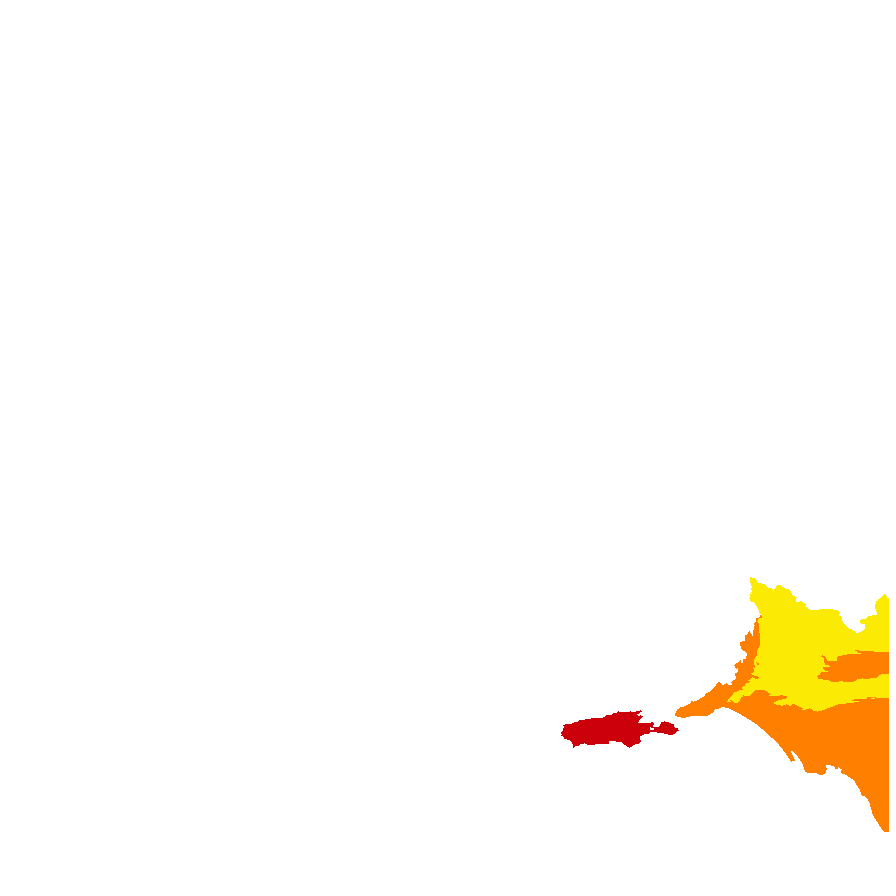
Botanical art
Common names
Simmon's Wattle
Hall's Wattle
Etymology
Acacia from the Greek 'akakia' and derived from 'ake' or 'akis' meaning a sharp point or thorn and 'akazo' meaning to sharpen. Dioscorides, the Greek physician and botanist used the word in the 1st century AD for the Egyptian thorn tree, Acacia arabica. Simmonsiana named in honours of Marion and John Simmons, who have contributed significantly to promoting Australian acacias and to advancing our knowledge of this genus, Marion through her writing and illustrations and John through his photographs.
Distribution and status
Found on Kangaroo Island, southern Mount Lofty Ranges, lower Murray to the upper South-east in South Australia, growing in seasonally wet, shallow depressions in undulating country, on red-brown loam over limestone or ironstone. Small isolated populations are also found in New South Wales and Victoria. Native. Rare in South Australia. Rare in the other States.
Herbarium regions: Murray, Southern Lofty, Kangaroo Island, South Eastern
NRM regions: Adelaide and Mount Lofty Ranges, Kangaroo Island, South Australian Murray-Darling Basin, South East
AVH map: SA distribution map (external link)
Plant description
Bushy, spreading shrub, commonly domed and procumbent to 2 m high and to 4 m diameter. Bark smooth and grey with branchlets reddish. Leaves slightly fleshy, glabrous, grey-green to green, oblanceolate, sometimes interspersed with a few that are narrowly elliptic, to 45 mm long and 9 mm wide. Inflorescences axillary racemes, single or twin with globular light to mid-golden flower-heads. Fruits are strongly curved black pod to 70 mm long and 4 mm wide. Seeds are dark brown to black, ovoid to elliptic to 5 mm long and 2 mm wide. Seed embryo type is investing.
Seed collection and propagation
Collect seeds between November and January. Collect mature pods that are turning brown, with hard, dark seeds inside. Place the pods in a tray and leave to dry for 1-2 weeks or until the pods begin to split. Then rub the dried pods to dislodge the seeds. Use a sieve to separate any unwanted material. Store the seeds with a desiccant such as dried silica beads or dry rice, in an air tight container in a cool and dry place. Seed viability is usually high. This species has physical dormancy that needs to be overcome for the seed to germinate (e.g. nicking or softening the seed coat).
| Location | No. of seeds (weight grams) | Number of plants | Date collected | Collection number Collection location | Date stored | % Viability | Storage temperature |
|---|---|---|---|---|---|---|---|
| BGA MSB | 13,000 (91.2 g) 13,000 (91.2 g) | 50+ | 16-Dec-2005 | PJA115 Southern Lofty | 1-Aug-2006 | 100% | -18°C |
| BGA | 2,700 (15.71 g) | 50 | 20-Dec-2006 | Murray Murray | 1-Aug-2007 | 90% | -18°C |
| BGA | 662 (3.970 g) | 4 | 4-Jan-2022 | M.J.Haby (As4) Wilsons & Elsegoo Kangaroo Island | 7-Jul-2022 | 100% | -18°C |
| BGA | 300 (1.150 g) | 4 | 4-Jan-2022 | M.J.Haby (As5) Wilsons & Elsegoo Kangaroo Island | 7-Jul-2022 | 98% | -18°C |
| BGA | 220 (1.160 g) | 4 | 4-Jan-2022 | M.J.Haby (As6) Wilsons & Elsegoo Kangaroo Island | 7-Jul-2022 | 80% | -18°C |
| BGA | 600 (3.600 g) | 4 | 4-Jan-2022 | M.J.Haby (As3) Wilsons & Elsegoo Kangaroo Island | 7-Jul-2022 | 85% | -18°C |
| BGA | 1,900 (10.700 g) | 4 | 4-Jan-2022 | M.J.Haby (As2) Wilsons & Elsegoo Kangaroo Island | 7-Jul-2022 | 85% | -18°C |
| BGA | 4,457 (26.760 g) | 4 | 4-Jan-2022 | M.J.Haby (As1) Wilsons & Elsegoo Kangaroo Island | 7-Jul-2022 | 95% | -18°C |
Number of plants: This is the number of plants from which the seeds were collected.
Collection location: The Herbarium of South Australia's region name.
% Viability: Percentage of filled healthy seeds determined by a cut test or x-ray.